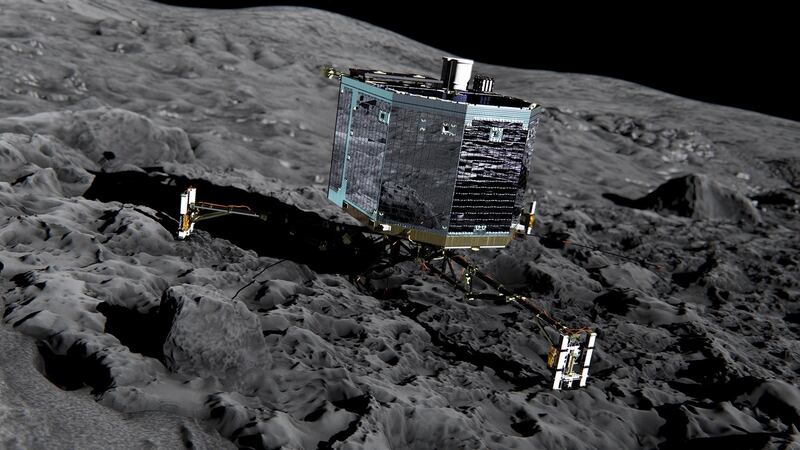More secrets of comet 67P/Churyumov–Gerasimenko have been revealed after researchers discovered layers of exposed water ice on the comet's surface.
Researchers running the Rosetta spacecraft in orbit around the 67P comet knew that there was abundant water vapour in the cloud surrounding it.
They also knew that water was the main constituent of cometary nuclei. Yet there was a surprising lack of ice visible on the surface.

This changed when an instrument on board the spacecraft spotted water ice in a dusty region on the surface dubbed Imhotep.
Two debris falls exposed patches of pure water ice and Gianrico Filacchione of the Istituto di Astrofisica e Planetologia Spaziali in Rome and colleagues were able to gather information about the ice and how it might have formed.
They estimated the amount of ice and the size of ice grains. Some of the grains were pure water ice while others were mixed up with dark material.
Water ice
Their analysis suggests that the comet must have a layered structure, with an outer dehydrated crust superimposed on layers of water ice. The crust is made of dark, dehydrated, organic-rich material.
"The stratigraphy observed on 67P/Churyumov–Gerasimenko is therefore the result of evolutionary processes affecting the uppermost metres of the nucleus and does not necessarily require a global layering to have occurred at the time of the comet's formation," the authors write on Wednesday in the journal Nature.
The absence of large regions of exposed water ice have been a common finding on the surfaces of many of the comets observed at close quarters so far, the scientists say. Now they have a credible working explanation for this apparent lack of ice, with the water ice hidden underneath a crust of organic chemicals.
The Rosetta spacecraft is run by the European Space Agency. Rosetta arrived at 67P in August 2014 and its lander Philae landed on the surface on 12 November 2014.












